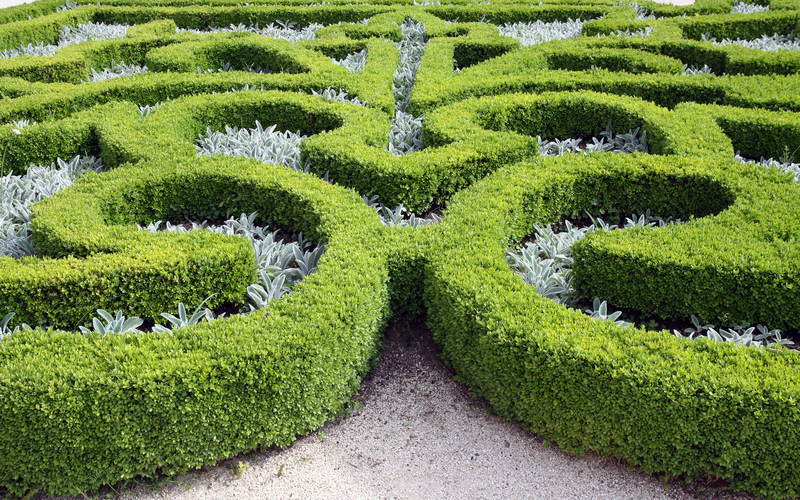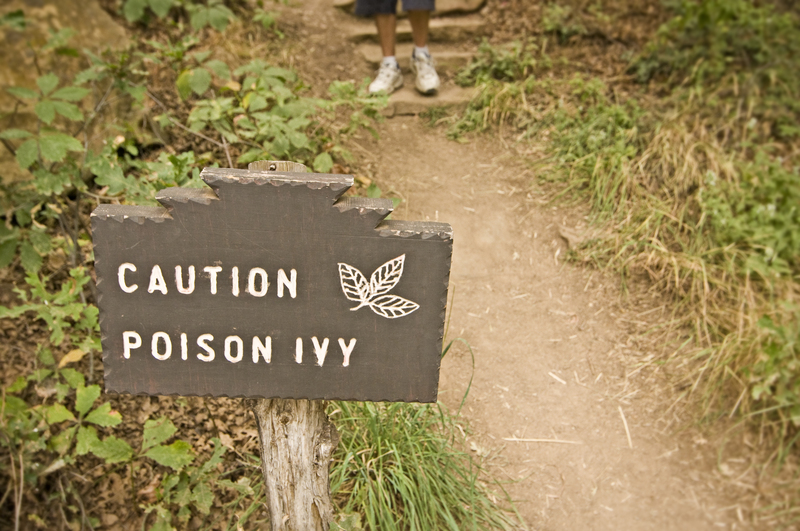Turning Outdoor Spaces into Imaginative Kid-Friendly Areas
Posted on 11/09/2025
Turning Outdoor Spaces into Imaginative Kid-Friendly Areas: A Complete Guide
Unlock the joy and creativity in your backyard or communal garden with our in-depth guide on turning outdoor spaces into imaginative kid-friendly areas. Fostering imagination, adventure, and learning, these dynamic play zones will spark endless excitement for children--transforming any outdoor environment into a wonderland of discovery. Read on to explore unique tips, inspiring designs, and practical steps to create a safe, inclusive, and adventurous playground for kids of all ages.
Why Create Kid-Friendly Outdoor Spaces?
Modern kids often spend much of their time indoors, glued to screens or surrounded by structured routines. Imaginative outdoor spaces provide vital opportunities for unstructured play, creativity, and physical activity. Designing a kid-friendly yard or play area encourages children to:
- Develop social skills through cooperative play
- Boost physical health and motor skills
- Stimulate creativity with open-ended play
- Learn and appreciate nature
- Build problem-solving and self-confidence
Transforming your outdoor area into a child-friendly, imaginative environment will bring smiles, laughter, and meaningful growth for your little ones.

Planning Your Kid-Friendly Outdoor Space: Key Considerations
Before you begin your backyard transformation, plan carefully to make the most of your available space. Here's what to keep top of mind:
1. Assess Space & Safety First
- Safety is paramount. Survey your yard or communal area for hazards such as sharp corners, poisonous plants, slippery surfaces, and unsecured gates or pools.
- Choose a location where kids are visible from inside the house or common areas.
- Consider sun exposure and add shaded play zones if needed.
- Ensure fencing is secure for younger children.
2. Include Input From The Kids
- Ask children about their dream play space.
- Observe their play patterns, favorite activities, and interests to inspire your design.
- Encourage kids to help during the setup and decoration--this promotes ownership and creativity.
3. Mix Structured and Unstructured Play
Imaginative play spaces should balance structure (like playsets and swings) with open-ended areas that invite creativity--such as sandpits and secret gardens.
4. Use Natural and Sustainable Materials
- Opt for natural elements like wood, stone, and non-toxic paints wherever possible.
- Plant shrubs and flowers to teach kids about nature and pollinators.
- Minimize use of plastic and prioritize eco-friendly materials for long-term durability and environmental responsibility.
Creative Ideas for Imaginative Outdoor Play Spaces
Let's dive into practical inspiration. Here are some top backyard ideas for designing an imaginative kid-friendly outdoor space:
Adventure Playground
Classic swings, slides, and jungle gyms are always loved, but consider taking it up a notch with:
- Climbing walls or ropes for developing motor skills
- Balance beams and stepping stones for coordination
- Zip lines (with safety in mind) for thrill-seekers
- Obstacle courses using logs and tires
Add variety and encourage inventiveness by changing elements seasonally or as kids grow.
Secret Garden Hideaways
Children are naturally drawn to enchanting and mysterious places. Create cozy nooks and hidden corners using:
- Hedge mazes or tall grasses
- Teepees or tents made from fabric, bamboo, or willow branches
- Small arboretums or fairy gardens with stepping stones and miniature decorations
- Leafy tunnels or vine arbors
Outdoor Art and Craft Stations
Encourage creativity outdoors with spaces dedicated to artistic expression:
- Chalkboard walls for drawing and games
- Upcycled tables for crafts and painting
- Naturally colored pebbles, leaves, and twigs for Nature Art
- Easy-clean surfaces for big, messy projects
Sand and Water Play Zones
Sandpits, splash pads, and water tables foster sensory exploration while keeping things cool in summer:
- Use covered sandboxes to keep the area hygienic and shaded
- Build a water wall using recycled bottles and tubes
- Add buckets, spades, and molds for creative play
- Provide waterproof cushions or mats for comfort
Edible Gardens and Nature Learning
Planting edible herbs, berries, or vegetables teaches responsibility and sparks curiosity about the natural world:
- Dedicate raised beds or planters for kids-only gardens
- Let children choose seeds, plant, and harvest their own crops
- Incorporate bug hotels, butterfly houses, and bird feeders
- Use labels and signs to help with learning
Music and Movement Corners
- DIY musical instruments from hanging pots, pans, or pipes
- Outdoor dance or yoga mats for expression and stretching
- Wind chimes, bells, and whisper tubes for sensory fun
Imaginative Playhouses and Structures
From pirate ships to castles, a dedicated playhouse or fort stimulates pretend play:
- Use sturdy, weather-resistant materials.
- Design windows, doors, and portholes to spark creativity.
- Allow for seasonal decorations and customization.
Mini Sports and Games Arenas
- Set up simple fields for soccer, tag, or badminton
- Outdoor hopscotch, foursquare, or ring toss with painted markers
- Install basketball hoops or low nets for multi-age use
How To Foster Imagination and Inclusion in Outdoor Spaces
To truly turn your outdoor space into an imaginative kid-friendly area, focus on these key elements:
1. Flexibility and Open-Ended Play
- Add loose parts like logs, rocks, wood blocks, and fabric pieces for kids to incorporate into their own games.
- Encourage children to invent new rules and change the space according to their imaginations.
2. Inclusive Design for All Ages and Abilities
- Choose ground coverings like rubber mulch or grass for soft play and wheelchair accessibility.
- Provide shaded rest areas and benches for adults and sensory breaks.
- Add ramps or wide paths for strollers and mobility aids.
- Use visual and tactile cues such as bright colors and textured surfaces for differing sensory needs.
3. Seasonal and Thematic Play Zones
- Rotate toys and decorations to reflect changing seasons and holidays.
- Organize themed treasure hunts, story times, or science experiments outdoors.
- Use props like flags, costumes, and obstacle markers to transform the space for parties and gatherings.
4. Encourage Independent and Social Play
Balance solo nooks with group spaces--for example, a reading tent tucked into a corner, alongside a large play lawn or sandpit for cooperative games.
Tips for Maintaining Your Imaginative Outdoor Play Area
- Regularly inspect play equipment for damage and hazards.
- Clean sand, water, and natural play areas to prevent pests and mold.
- Refresh mulch, paint, and plantings annually to keep things looking bright.
- Involve kids in easy maintenance activities such as watering plants or tidying up toys.
Budget-Friendly Ways to Turn Your Yard Into a Dreamy Play Space
You don't need a massive budget to create an inspiring, kid-friendly backyard:
- Repurpose old pallets for building forts, benches, or climbing platforms.
- Craft DIY stepping stones with concrete molds and pebbles.
- Scout local buy/sell groups or yard sales for gently used play equipment.
- Upcycle tires, crates, and barrels into unique features.
- Organize communal work days with neighbors for pooled resources and creativity.
Inspiring Real-World Examples
1. The Storybook Garden
One family transformed their backyard into a whimsical landscape inspired by favorite children's books. Painted rocks marked paths to "secret" reading nooks, while a small stage allowed kids to act out stories beneath a shady tree.
2. Community Nature Playground
In a nearby suburban park, volunteers created a low-cost imaginative playground with log balance beams, climbing mounds, and wildflower gardens to attract pollinators and kids alike.
3. Urban Rooftop Play Space
City dwellers reimagined a flat rooftop with modular planters, soft mats, water tables, and colorful murals for a safe, creative retreat above the city hustle.

Frequently Asked Questions
How do I make my outdoor space safe for kids?
Supervise children, remove hazards, and use child-safe materials. Install secure fencing and check all play equipment regularly.
Which plants are best for kid-friendly gardens?
Choose non-toxic, low-maintenance varieties such as sunflowers, strawberries, carrots, and marigolds. Avoid sharp thorns or allergenic species.
What if I have a small yard or balcony?
Maximize vertical space with planters, wall art, and compact playhouses. Use foldable or multi-purpose furniture for flexible play areas.
How can I encourage kids to play outdoors more often?
- Involve them in creating and updating the space.
- Limit screens and invite friends over for outdoor playdates.
- Rotate toys and add new activities to maintain interest.
Conclusion: Grow Their Imagination, One Outdoor Space at a Time
Investing in an imaginative, kid-friendly outdoor area pays lasting dividends in your children's happiness, health, and sense of wonder. With thoughtful planning, creative touches, and safety in mind, even the most modest yard can become a magical playground for adventure and learning.
Gather inspiration, involve your little dreamers, and let your outdoor space blossom into a sanctuary of growth and joy. The possibilities for playful discovery are truly limitless!

